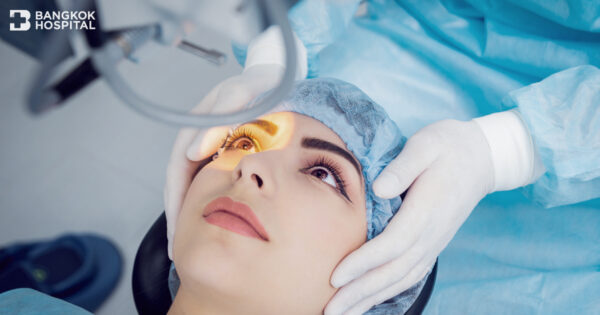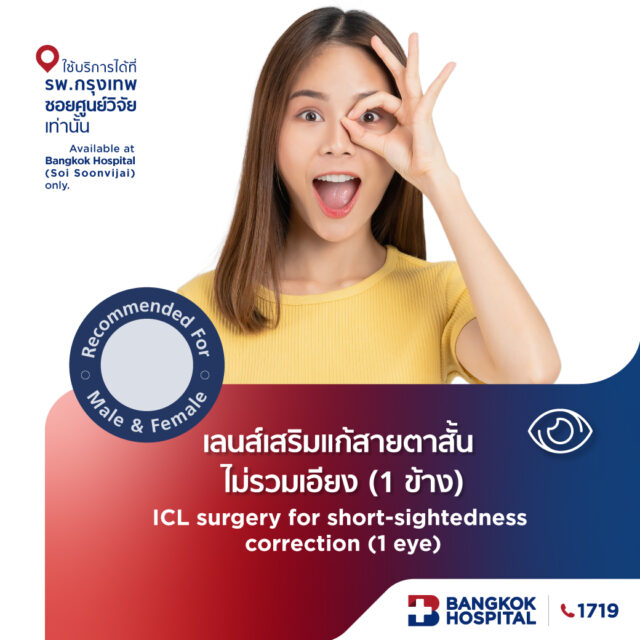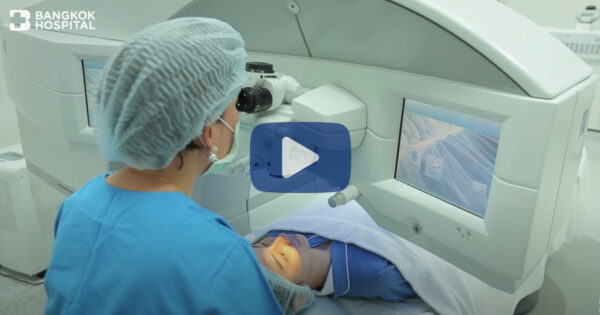FEMTO LASIK Surgery Procedure
- Patients will receive antibiotic and anesthetic drops, along with pain medication before the surgery.
- Once in the surgery room, patients will lie flat with a comfortable leg rest on the Visumax machine bed to proceed with the corneal flap creation phase.
- The surgery begins with cleaning the area around the eye. The doctor then places a device to keep the eye open. During the corneal flap creation phase, patients are advised to look at the green light inside the machine at all times, avoid squeezing the eye. When the instrument touches the eye, a slight pressure may be felt. Light is still visible during the laser firing to separate the corneal layer, which takes less than 25 seconds overall.
- The ophthalmologist opens the previously separated corneal flap and uses the Excimer Laser to shape the cornea according to the patient’s vision requirements.
- After the laser reshaping is finished, the doctor cleans the wound and repositions the separated corneal flap back in place. The corneal surface can heal itself within 3 – 5 minutes.
- The surgery takes about 15 minutes per eye. Patients can see immediately after the surgery, but the vision will not be clear yet.
- The doctor places a protective eye cover with small holes that allows vision to prevent rubbing of the eye.
- Patients go home to rest before returning for a follow-up eye examination the next day.
- The day after the surgery, when seeing the doctor for a vision check and wound inspection, most patients can see well from the first day after surgery. However, vision may not be stable during the first month.
If it is the traditional LASIK surgery using a blade (Microkeratome) for corneal flap creation, there is a difference in the second step. The doctor uses a device with a blade (Microkeratome) to separate the corneal layer by placing an instrument on the eye to increase intraocular pressure for accurate layer separation. Patients will feel pressure but no pain, and will not be able to see light during the separation phase. However, after the corneal layer separation is complete and the instrument is removed, light visibility will return.










